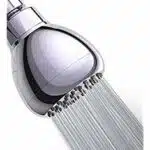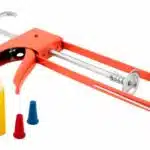As a tamper tool expert, I have dedicated my career to educating individuals on how to properly use this essential tool. A tamper tool is a handheld device that is used to compact ground coffee into a portafilter basket. It has become an indispensable tool for baristas and coffee enthusiasts alike, as it ensures the perfect extraction of espresso shots.
Using a tamper tool may seem like a simple task, but it requires precision and technique to achieve the desired results. In this article, I will provide step-by-step instructions on how to use a tamper tool correctly and efficiently. Whether you are just starting your journey in the world of coffee or have been using a tamper tool for years, this article will serve as an excellent resource for improving your technique and producing high-quality espresso shots every time.
Understanding The Purpose Of A Tamper Tool
While some may view a tamper tool as an unnecessary accessory for coffee enthusiasts, it serves a crucial purpose in ensuring the perfect cup of coffee. Understanding tamper tools starts with their materials and design. Tamper tools are typically made from stainless steel, aluminum, or wood. The design varies depending on the manufacturer, but they usually consist of a handle and a flat base that is used to compress coffee grounds into a puck shape before brewing.
The benefits of using a tamper tool go beyond simply creating an aesthetically pleasing puck of coffee grounds. Proper tamping ensures that water flows evenly through the grounds during extraction, resulting in a well-balanced and flavorful cup of coffee. A tamper tool also helps prevent channeling, which occurs when water finds its way through weak points in the puck instead of flowing evenly through all of the grounds.
Choosing the right tamper tool for your needs involves considering factors such as size, weight, and style. It is important to choose a tamper tool that fits comfortably in your hand and is weighted properly for consistent tamping pressure. Additionally, there are various styles available such as flat, convex, or adjustable bases to suit different brewing methods. By understanding the purpose and benefits of using a tamper tool and selecting one that meets your specific needs, you can elevate your home brewing experience and enjoy delicious coffee every time.
Choosing The Right Tamper Tool For Your Needs
When it comes to using a tamper tool, selecting the right size is crucial. It should fit your portafilter basket perfectly, ensuring that the coffee grounds are compressed evenly and uniformly. To select the proper size, measure your portafilter basket diameter and choose a tamper that matches that measurement. A tamper that is too small or too big can result in an uneven extraction, leading to a subpar cup of coffee.
In addition to size, comparing different materials is also important. Tamper tools come in various materials such as stainless steel, aluminum, and wood. Stainless steel tampers are durable and have a long lifespan but can be heavy and difficult to handle for some users. Aluminum tampers are lighter and easier to handle but may not be as sturdy as stainless steel ones. Wood tampers provide a comfortable grip but may not last as long as metal ones.
Ultimately, choosing the right tamper tool is a personal preference based on your needs and preferences. Consider factors such as size and material when making your decision. Once you have selected the perfect tamper tool for you, you can move onto preparing your coffee for tamping to ensure an excellent cup of joe every time.
Preparing Your Coffee For Tamping
- When preparing coffee for tamping, the grind size should be uniform and the grounds should be neither too coarse nor too fine for the best results.
- When tamping, the pressure should be firm and consistent to ensure a well-packed puck with no pockets of air.
- After each use, it is important to clean the tamper to ensure that it is free of grounds and oils that can negatively impact the flavor of the coffee.
- The tamper should be held at a consistent angle to ensure that the grounds are evenly distributed in the portafilter.
- After tamping, the grounds should be level and the edges should be clean to ensure optimal extraction.
- A good rule of thumb is to tamp with about 30 pounds of pressure for consistent results.
Grind Size
When preparing your coffee for tamping, grind consistency is a crucial factor to consider. The size of the grind will directly impact the extraction time, which can ultimately influence the overall taste and quality of the coffee. As an expert tamper tool user, it is essential to understand how to adjust the grind size according to your preferred extraction time.
To achieve a perfect cup of coffee, you must first determine your desired extraction time. For instance, if you prefer a shorter extraction time, you’ll need a finer grind size. This is because a smaller particle size will increase the surface area of the coffee grounds exposed to water and facilitate faster extraction. On the other hand, if you like longer extraction times, use a coarser grind size as it will slow down the water flow through the coffee bed.
While adjusting your grind size may require some trial and error, it’s essential to be patient and attentive during this process. Keep in mind that even small changes in grind size can have significant effects on your final cup. By mastering this skill and using your tamper tool correctly, you can achieve consistent and delicious coffee every time without fail!
Tamping Pressure
As a tamper tool expert, there are several factors to consider when preparing your coffee for tamping. We’ve discussed how grind consistency can impact the extraction time and overall quality of your coffee. Now, let’s talk about another critical factor: tamping pressure.
The importance of tamping pressure cannot be overstated. It’s the final step in preparing your coffee grounds before water is added, and it can significantly affect the taste and texture of your coffee. The goal of tamping is to create an evenly distributed bed of coffee that allows water to extract flavor and aroma while avoiding channeling or uneven extraction.
There are various techniques for applying tamping pressure, but the most important thing is consistency. Your tamper tool should apply even pressure across the entire surface area of the coffee bed, ensuring that all grounds are compacted equally. Whether you prefer a lighter or heavier tamp, it’s essential to maintain this consistency to achieve a balanced extraction every time.
Cleaning Tamper
Ensuring that your coffee tamper is clean and well-maintained is an essential aspect of preparing your coffee for tamping. A dirty or damaged tamper can negatively impact the quality of your coffee, resulting in an inconsistent extraction. Therefore, it’s crucial to incorporate a cleaning technique into your regular maintenance routine.
When it comes to cleaning your tamper, there are several maintenance tips you should follow. Firstly, make sure to wipe down the base and handle of the tamper after each use to remove any residual coffee grounds or oils. You can do this using a damp cloth or paper towel. Secondly, periodically disassemble your tamper tool and give it a deep clean with warm water and mild detergent. This will help prevent any buildup of grime or bacteria that could affect the flavor and aroma of your coffee.
In conclusion, keeping your tamper tool clean and well-maintained is just as important as grind consistency and tamping pressure when preparing your coffee for tamping. By incorporating a regular cleaning technique into your routine, you’ll ensure that every cup of coffee you make tastes delicious and consistent every time. With these maintenance tips in mind, you’re now ready to take on the world of coffee brewing like a true expert!
Proper Tamping Technique
It is essential to acknowledge that proper tamping technique is crucial in making a quality espresso. A tamper tool is used to pack the ground coffee firmly into the portafilter basket before brewing, which helps to create an even extraction and prevent channeling. However, many baristas often make common mistakes when tamping that can significantly affect the taste of their coffee.
One of the most common mistakes made during tamping is uneven distribution of coffee grounds in the portafilter basket. This usually results in uneven extraction and poor taste quality. To avoid this, baristas should ensure they distribute the coffee evenly throughout the basket before tamping using a leveling tool or finger tapping.
Tamping accessories such as distribution tools and tamp mats are also crucial for achieving consistent results. Distribution tools help to distribute coffee evenly while tamp mats provide a soft surface for the portafilter to rest on during tamping, preventing any damage that may affect its performance. With proper use of these accessories and techniques, one can attain an even tamp with minimal wastage and maximum flavor extraction.
To ensure perfect extraction, it’s essential to apply the right amount of pressure when using a tamper tool. In our subsequent section, we will discuss how to achieve consistent pressure while tamping without compromising on flavor quality.
Applying The Right Amount Of Pressure
After mastering the proper tamping technique, the next crucial step is applying consistent pressure. To do this, you need to use a tamper tool that fits your portafilter basket correctly. Using a tamper with a smaller diameter than your basket will leave untamped edges, while using one with a larger diameter will compress the coffee unevenly.
To avoid tamping mistakes, make sure to use a level surface and apply even pressure perpendicular to the espresso machine’s portafilter. Avoid twisting or tilting the tamper tool while pressing down as it can cause an uneven tamp. Furthermore, avoid adding too much pressure or not enough as both can lead to over or under-extraction of the coffee grounds.
Here are four essential tips for maintaining consistency in your tamping:
- Use the same amount of coffee grounds for each shot.
- Apply consistent downward pressure when tamping.
- Ensure that you tamp evenly across the entire surface of the coffee bed.
- Check your tamping visually by looking for any unevenness in the puck before locking it into your machine.
By following these tips, you can guarantee that each shot of espresso has consistent extraction and flavor profile every time!
Maintaining Consistency In Your Tamping
With every shot of espresso, maintaining consistency in your tamping is essential. The perfect shot depends on a precise and even tamp, which compresses the coffee grounds uniformly. Inconsistent tamping can lead to uneven extraction, resulting in a poor-quality shot.
One way to ensure consistency is by using a tamper tool. A tamper tool applies consistent pressure to the coffee grounds, ensuring that they are evenly compressed. This precision is crucial for achieving the perfect shot every time.
In summary, maintaining consistency in your tamping is vital for espresso quality. Using a tamper tool allows for precision and ensures that each shot is of high quality. By investing in a tamper tool and mastering your technique, you can improve your espresso-making skills and impress those around you with your barista expertise. Next, we will discuss avoiding common tamping errors to further improve your technique and elevate your espresso game.
Avoiding Common Tamping Errors
Maintaining consistency in tamping is crucial to achieving an excellent espresso shot. However, it is not the only factor that contributes to a perfect cup of coffee. Common tamping mistakes can ruin the quality of your espresso, even if you have mastered the technique of tamping. Therefore, it is essential to be aware of these errors and learn how to avoid them.
One common mistake in tamping is uneven distribution of coffee grounds. This error results in under-extracted or over-extracted shots, leading to poor flavor and aroma. Another mistake is using too much or too little pressure when tamping. Too much pressure will cause the coffee to become compacted and slow down the brewing process, while too little pressure will result in water passing through too quickly, producing a weak and watery shot.
To perfect your tamp technique and avoid common mistakes, here are some tips:
- Use a scale to measure the amount of coffee grounds accurately.
- Ensure an even distribution of coffee grounds in the portafilter basket before tamping.
- Apply consistent but gentle pressure when tamping.
- Clean your tamper tool regularly to prevent leftover residue from affecting your espresso’s taste.
- Practice regularly with different coffee blends until you find the right combination for your taste.
By following these tips, you can improve your tamp technique and produce high-quality espresso shots consistently. In the next section, we will discuss how to check your tamp quality without compromising on flavor and texture.
How To Check Your Tamp Quality
Measuring tamp quality is crucial in achieving consistent coffee extraction. A poorly tamped espresso shot can lead to under-extraction or over-extraction, resulting in a poor-tasting drink. To ensure that your tamp is of high quality, you need to check the pressure used during tamping.
One way to measure the quality of your tamp is by using a tamper pressure gauge. This tool measures the amount of force applied during tamping and displays it on a dial. The ideal range for tamping pressure is between 30-40 pounds of force. Anything higher than that can cause over-extraction, while anything lower can result in under-extraction.
Troubleshooting tamp issues can be frustrating, but with proper measurement techniques and adjustments, it is possible to achieve optimal extraction. Refer to the table below for common tamp issues and their corresponding solutions.
| Tamp Issue | Solution |
|---|---|
| Channeled shot | Adjust distribution technique |
| Uneven extraction | Check for uneven tamping pressure |
| Sour taste | Increase tamping pressure |
| Bitter taste | Decrease tamping pressure |
| Weak shot | Increase dose or adjust grind size |
By measuring your tamp and troubleshooting any issues, you can ensure that your espresso shots are consistently delicious. In the next section, we will discuss how adjusting your tamping technique can further improve the quality of your coffee extraction.
Adjusting Your Tamping To Achieve Optimal Extraction
Transition: As we have learned in the previous section, achieving a perfect tamp is essential to obtain a quality espresso shot. Now, let us delve further into the process by discussing how adjusting your tamp height and experimenting with different tamp pressures can affect the extraction of your coffee.
As an expert on tamper tools, I highly recommend that you adjust your tamp height according to your portafilter basket’s size. A general rule of thumb is to ensure that the grounds are compressed enough to form a sturdy puck but not too much that it becomes difficult for water to penetrate through. Experimenting with different heights will help you determine what works best for you. For instance, if you are using a 58mm portafilter, a 30-pound pressure would be ideal while tamping at about 5-10mm below the rim.
Another crucial factor in achieving optimal extraction is experimenting with different tamp pressures. You may find that applying more or less pressure affects your coffee’s taste and strength. However, keep in mind that applying too much pressure could cause channeling and inconsistent extraction. Therefore, it is best to start with moderate pressure and gradually adjust until you find your desired taste profile.
To take your espresso game up another notch, consider using a distributor tool alongside your tamper. This tool helps distribute grounds evenly before tamping them down, further ensuring consistent extraction throughout the brewing process. When used correctly and in combination with careful adjustment of tamp height and pressure, this technique can result in superior flavor profiles that will leave your customers satisfied every time they take a sip of their perfectly brewed espresso shot.
Using A Distributor Tool Alongside Your Tamper
In addition to using a tamper tool, you can also benefit from using a distributor tool. A distributor tool is used alongside your tamper and helps distribute the coffee grounds evenly in the portafilter basket. This ensures that there are no air pockets or clumps of coffee, resulting in a more consistent extraction and better-tasting espresso.
One alternative to using a distributor tool is to use your finger or a spoon to distribute the coffee grounds manually. However, this method is not as effective as using a distributor tool since it does not ensure even distribution. Another alternative is to use the side of your tamper to distribute the grounds, but this can cause damage to the tamper over time.
If you decide to use a distributor tool, there are several benefits. First, it saves time since it distributes the coffee grounds quickly and efficiently. Second, it ensures that there are no air pockets or clumps of coffee in the portafilter basket. Lastly, it results in a more consistent extraction and better-tasting espresso.
To further improve your espresso-making skills, consider investing in a distributor tool alongside your tamper. Not only will it save time and effort but also result in better-tasting espresso with each brew. In the next section, we will discuss how to clean and maintain your tamper tool for longevity and optimal performance.
Cleaning And Maintaining Your Tamper Tool
As a tamper tool expert, it is essential to know the proper cleaning techniques to ensure that your tool works efficiently. Cleaning your tamper tool after every use is crucial to prevent any residue buildup, which can lead to issues with tamping consistency. To clean your tamper tool, begin by using a damp cloth to wipe down the base and handle. Next, use a small brush or toothbrush to remove any coffee grounds or debris from the base’s edges and the tamping surface.
In addition to regular cleaning, it is crucial to follow a maintenance schedule for your tamper tool. The frequency of maintenance depends on how frequently you use the tool. For heavy usage, maintenance should be done every two weeks, while light usage requires maintenance once every month. Maintenance involves disassembling the tamper tool and checking each component for damage or wear and tear. If you find anything that needs replacing or repairing, do so immediately before using it again.
By following proper cleaning techniques and adhering to a maintenance schedule for your tamper tool, you will prolong its lifespan and ensure consistent performance. Remember always to store your tamper tool in a dry place when not in use and avoid exposing it to extreme temperature changes or direct sunlight.
Moving forward into troubleshooting common tamper tool issues section, we will explore some of the most common problems faced by users and how they can be resolved quickly and easily.
Troubleshooting Common Tamper Tool Issues
As a tamper tool expert, I have seen many common tamper tool issues that can arise during the process of making espresso. These issues can range from simple mistakes to more complicated problems that require troubleshooting. It is crucial to know how to recognize and troubleshoot these issues so that you can continue to make delicious espresso without any hiccups.
One common issue that people face when using a tamper tool is an uneven or inconsistent tamp. This problem can occur if the user applies too much pressure on one side of the coffee bed while tamping. To avoid this, make sure you apply even pressure all around the coffee bed and use a leveler tool if necessary. Another possible cause of an uneven tamp is using the wrong size basket for your portafilter. Make sure you are using the correct size basket for your machine and tamp accordingly.
Another common problem with tamper tools is difficulty in achieving the desired level of resistance when tamping. If you are not getting enough resistance, it could be due to insufficient coffee in your basket or using a coarser grind than what is recommended for your machine. On the other hand, if you are getting too much resistance, it could be due to overfilling your basket or using too fine of a grind. In either case, adjust accordingly until you achieve the desired level of resistance.
In summary, troubleshooting common tamper tool issues requires attention to detail and knowledge about how different factors can affect your espresso-making process. By keeping these tips in mind and practicing proper technique, you will be able to overcome any obstacles that come your way while using a tamper tool with ease and confidence. In the next section, we will explore how to use a tamper tool with different types of espresso machines.
Using A Tamper Tool With Different Types Of Espresso Machines
When it comes to using a tamper tool with different types of espresso machines, there are a few key things to keep in mind. One of the most important considerations is whether you are using a manual or automatic machine. With a manual machine, you will typically need to apply more pressure when tamping your espresso grounds, while an automatic machine will do much of the work for you.
Another important factor to consider when using a tamper tool is the material of the tool itself. While plastic tampers may be cheaper and more lightweight, they can also be less durable and have a shorter lifespan than their stainless steel counterparts. Stainless steel tampers offer greater durability and precision, making them a popular choice among baristas and home espresso enthusiasts alike.
Ultimately, the best way to determine which type of tamper tool is right for your needs is to experiment with different options and find what works best for you. Whether you opt for a manual or automatic machine or choose between plastic or stainless steel tampers, practicing with your tamper tool regularly can help improve your technique and ensure that every cup of espresso you make is perfectly tamped and delicious.
- A perfectly tamped espresso shot can be the difference between an average drink and an exceptional one.
- Investing in high-quality tools like stainless steel tampers can improve both the taste and presentation of your drinks.
- Taking time to master your tamper tool demonstrates a commitment to excellence in coffee-making that will impress both customers and friends alike.
- Don’t underestimate the importance of regular practice – even small improvements in technique can lead to significant gains in flavor and quality over time.
As you continue on your journey towards mastering your tamper tool, there are many tips and tricks that can help take your skills to the next level. From adjusting pressure settings on automatic machines to experimenting with different types of coffee beans, there are many ways to fine-tune your technique over time. With dedication and practice, you can become a true expert in the art of espresso-making.
Tips And Tricks For Mastering Your Tamper Tool
To truly master the use of a tamper tool, it is important to not only understand the basic technique but also to utilize tamper tool accessories. One such accessory is the distribution tool, which helps evenly distribute coffee grounds in the portafilter before tamping. This ensures a consistent extraction and better tasting espresso. Another helpful accessory is a precision basket, which enhances the tampering process by ensuring an even tamp and reducing channeling.
Advanced tamping techniques can also elevate your espresso game. One technique is to use a light touch when initially pressing down on the coffee grounds, followed by increasing pressure as you finish the tamp. This creates a more even surface for water to flow through during extraction. Another technique is to use a twisting motion during tamping, which helps distribute the coffee grounds more evenly.
By incorporating these tips and tricks into your tampering routine, you can achieve higher quality espresso shots with ease. Don’t be afraid to experiment with different tamping methods and techniques to find what works best for you and your machine. With practice and patience, you’ll become a tamper tool pro in no time!
Experimenting With Different Tamping Methods And Techniques
After mastering the basics of using a tamper tool, it’s time to experiment with different techniques and tamping styles. The tamper tool is a versatile instrument that can be used in various ways to achieve different results. By experimenting with different methods, you’ll be able to find the perfect tamping style for your coffee that suits your taste buds.
One technique to try out is adjusting the amount of coffee grounds you use. The amount of coffee you tamp determines the pressure applied on the grounds, which affects how much water passes through them during extraction. Experimenting with different amounts will help you find the right balance between too little and too much coffee. Additionally, you can also try different tamping pressures to get better control over your espresso shot.
Another technique worth exploring is changing the distribution of coffee grounds before tamping. Unevenly distributed coffee can create inconsistencies in flavor and extraction, leading to an unsatisfactory cup of coffee. You can try using a distribution tool or even your finger to evenly spread out the grounds before using a tamper tool. This technique not only helps in achieving consistent shots but also enhances the overall taste and aroma of your espresso.
In conclusion, experimenting with different techniques and tamping styles is essential in finding what works best for you. As a tamper tool expert, I highly recommend trying out these techniques mentioned above or even creating new ones to suit your preferences. Remember that every step in making great espresso counts; therefore, it’s worth taking your time and effort in mastering this skillset!
Conclusion
In conclusion, using a tamper tool is an essential step in making the perfect espresso shot. It ensures that the coffee is evenly compacted, allowing for a consistent and flavorful result. To use a tamper tool effectively, you must choose the right one for your needs and prepare your coffee accordingly. Proper tamping technique involves applying the right amount of pressure and troubleshooting any issues that may arise.
As with any skill, mastering the use of a tamper tool takes practice and experimentation. Don’t be afraid to try different tamping methods and techniques to find what works best for you. Remember, practice makes perfect!
As the saying goes, “the devil is in the details,” and this is especially true when it comes to making espresso. Using a tamper tool may seem like a small detail in the grand scheme of things, but it can make all the difference between a mediocre shot and an exceptional one. So take your time, hone your skills, and enjoy the perfect cup of espresso every time!
Image Credits
- “Barista Tools” by _-0-_ (featured)





























